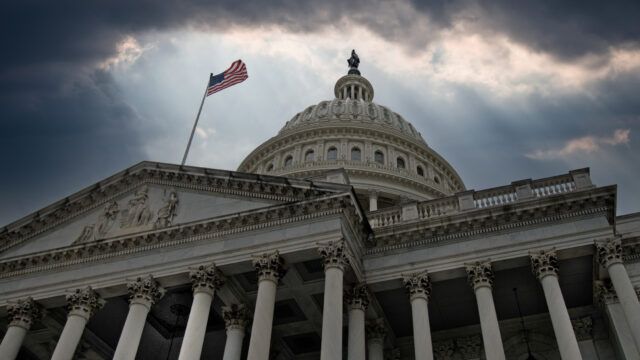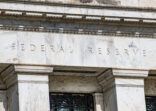Interest rate cut delays and the upcoming US election could subject markets to volatility as they enter the second half of the year, some asset managers have warned.
Although all the recent inflation data and commentary from the Fed appear to be pointing towards rate cuts this year, it may be difficult for the Fed to cut next year as well.
This is according to Ken Orchard, head of international fixed income at $1.54trn asset manager T Rowe Price.
“Our viewpoint differs from the consensus in that we believe inflation will not decrease sufficiently to enable central banks to cut rates next year,” he said. “The Fed may only be able to cut one to two times this year.”
“Inflation tends to be relatively persistent and there is a possibility that we might even witness higher rates and yields in the future.”
He emphasised that investors need to differentiate what is priced in the rates market versus what will happen.
“Many cuts have already been priced in for Europe, the US and other developed markets,” he said, the implication being that if the economic data does not provide central banks with the option to cut further, markets could be in for another bout of volatility.
Orchard who is also portfolio manager for the T Rowe Price Diversified Income Bond strategy, has kept overall duration lower in his portfolio to minimise interest rate risk.
Economic growth poses a risk
Going a step further, Orchard, also flagged the risk that economic growth picks up faster than expected, a scenario that is not yet been completely ruled out by some.
He said: “I think the biggest economic concern would be that growth accelerates too quickly and central banks are forced to respond.”
“Investors may even need to seriously think about rate hike,” he said. “This could pose a challenge for the markets.”
So far, the rates market has been relatively sanguine with low volatility as compared to last year when interest rate expectations were wildly fluctuating.
Given this backdrop, Orchard warned “unexpected events could trigger volatility and I think investors need to be prepared for that by managing their exposure on riskier fixed income assets flexibly”.
When it comes to his outlook for US growth, he characterises the recent economic data as “more of a pause in US exceptionalism than the end of it”.
“Although we have observed some narrowing in growth rates recently, it is likely to diverge again at some point next year,” he said.
“As these growth differences reemerge, we can expect to witness more monetary policy divergence between the US and other major developed markets, such as Europe and the UK.”
US election uncertainty
However, bond market volatility in the near term will be more a result of political uncertainty, according to Jack McIntyre, portfolio manager at Brandywine Global, a specialist investment firm owned by the $1.6trn asset manager Franklin Templeton.
“In the US, we expect election-induced market volatility to start earlier this year than typical,” he said.
The firm’s base case is a divided US government regardless of whether Biden or Trump wins the White House.
“That would be the best-case scenario for markets,” he explained. “A divided government curtails new major spending programmes and tax cuts.”
Indeed, one of the biggest concerns flagged by some investors this year has been around the sustainability of the US fiscal deficit and its implication for US treasury yields.
But in the more near term, McIntyre pointed to the economic data going forward as a key factor to watch.
“There are several other developments to monitor in the developed markets bond space in the second half of 2024 and one theme that will persist is that data will continue to be more important than central bank rhetoric,” he explained.
“We still believe the rest of 2024 will continue to be the year of the coupon. Developed market bonds have value because the coupon is now meaningful.”
“One caveat, investors should expect to endure an uptick in volatility in the second half, as markets focus more on the political landscape than on the economic one.”

















